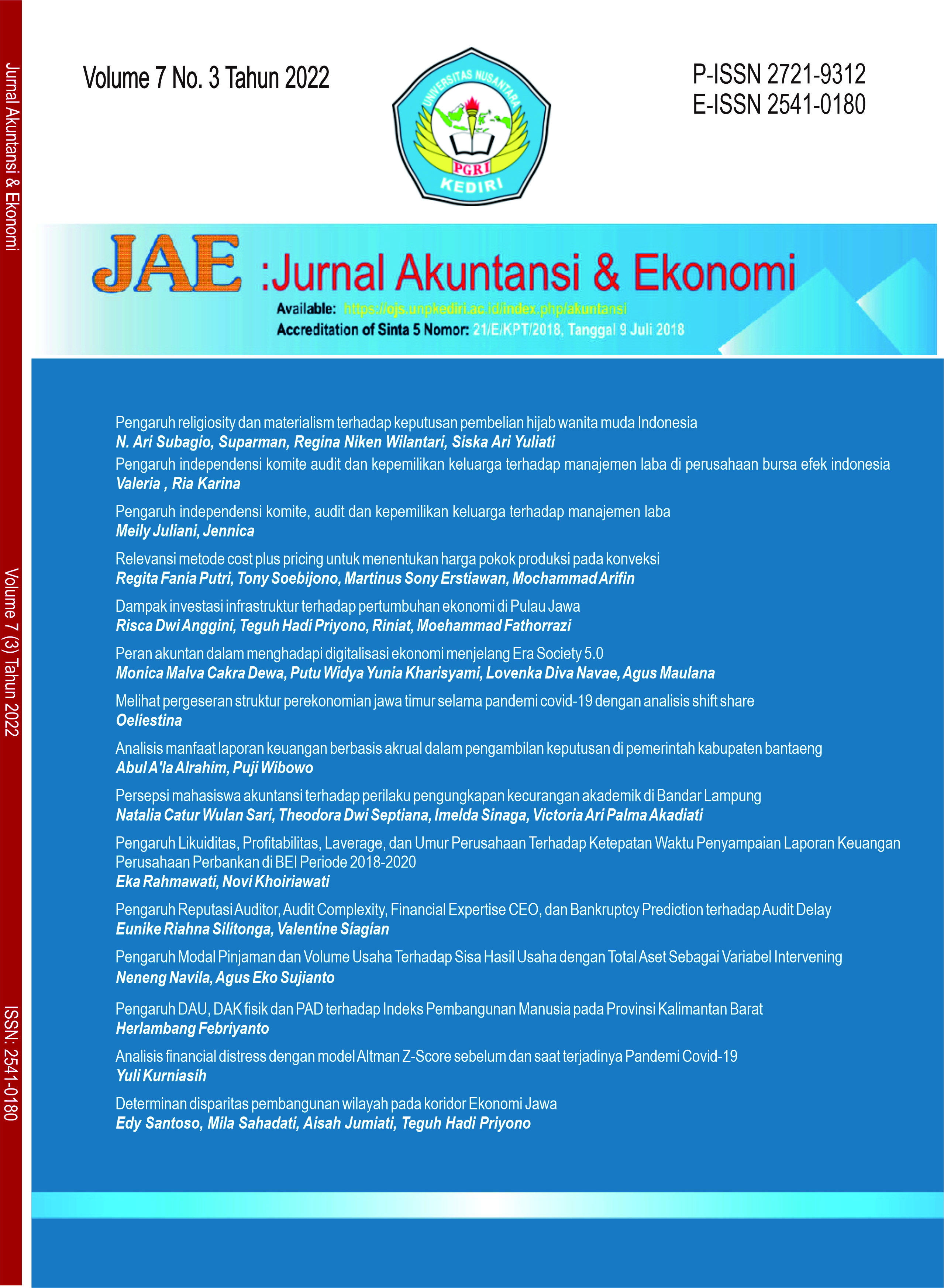Determinants of Regional Development Disparities in the Java Economic Corridor
DOI:
https://doi.org/10.29407/jae.v7i3.18926Keywords:
Economic Development Disparity, Mean Years School (RLS), Investment, Unemployment, Jaime Bonet Index, Java Economic CorridorAbstract
This study aims to determine the factors that influence regional development disparities in the Java economic corridor. This research data uses secondary data taken from several official government publications. The analytical method used in this study is the panel data regression estimation method. The results of the study show that the best model for estimating the determinants of regional development disparities in the Java economic corridor is the Fixed Effect Model. The results of the estimation explain that the disparity of economic development in the Java corridor is significantly influenced by the Mean Years School (RLS) variable in a negative direction, the Investment variable also affects the disparity of economic development in the Java corridor positively and significantly, while the Unemployment variable has a positive but not significant effect.
References
Bonet, J. (2006). Fiscal Decentralization and Regional Income Disparities: Evidence from the Colombian Experience. Springer Verlag.
Ghozali, I. (2018). Aplikasi Analisis Multivariate SPSS 25 (9th ed.). Universitas Diponegoro.
Gujarati, D. N. (2013). Dasar-dasar Ekonometrika, Edisi Kelima. Salemba Empat .
Hariani, E. (2019). Analisis Faktor-Faktor yang Mempengaruhi Ketimpangan Pendapatan di 38 Kabupaten/ Kota Jawa Timur Tahun 2012-2015. The International Journal of Applied Business, 3(1), 14–23.
Jhingan, M. L. (2010). Ekonomi Pembangunan dan Perencanaan Cetakan ke 13. Rajawali Pers.
Kuncoro, M. (2003). Ekonomi Pembangunan, Teori, Masalah, dan Kebijakan. Cetakan ke-3. APP AMP YPKN.
Myrdal, G. (1957). Economic Theory and Underdeveloped Regions. Gerald Duckworth.
Priyambodo, K. D., Luthfi, A., & Santoso, E. (2015). Analisis Disparitas Pendapatan Kabupaten Kota di Provinsi Jawa Timur. E-Journal Ekonomi Bisnis Dan Akuntansi, 2(1), 28–36.
Robert M, Solow. (1956). A Contribution to the Theory of Economic Growth. The Quarterly Journal of Economics, 70(1), 65–94.
Srihardianti, M. (2016). Metode Regresi Data Panel Untuk Peramalan Konsumsi Energi di Indonesia. Jurnal Gaussian, 476.
Sukirno, S. (1985). Ekonomi Pembangunan, Proses, Masalah dan Kebijakan. Lembaga Penerbit Fakultas Ekonomi Universitas Indonesia.
Yanthi, N. P. S. P., & Sutrisna, I. K. (2021). Pengaruh IPM dan PMDN Terhadap Pertumbuhan Ekonomi dan Ketimpangan Distribusi Pendapatan di Kabupaten/Kota Provinsi Bali. E-Jurnal Ekonomi Pembangunan, Universitas Udayana, 10(5), 1774–2222.
Zainuri, A., & Jamal, A. (2017). Disparitas Pembangunan Ekonomi di Indonesia. Jurnal Ilmiah Mahasiswa (JIM) Ekonomi Pembangunan Fakultas Ekonomi Dan Bisnis Unsyiah, 2(1), 1–10.
Downloads
Published
Issue
Section
License
Authors who publish with this journal agree to the following terms:
- Copyright on any article is retained by the author(s).
- The author grants the journal, right of first publication with the work simultaneously licensed under a Creative Commons Attribution License that allows others to share the work with an acknowledgment of the work’s authorship and initial publication in this journal.
- Authors are able to enter into separate, additional contractual arrangements for the non-exclusive distribution of the journal’s published version of the work (e.g., post it to an institutional repository or publish it in a book), with an acknowledgment of its initial publication in this journal.
- Authors are permitted and encouraged to post their work online (e.g., in institutional repositories or on their website) prior to and during the submission process, as it can lead to productive exchanges, as well as earlier and greater citation of published work.
- The article and any associated published material is distributed under the Creative Commons Attribution-ShareAlike 4.0 International License







